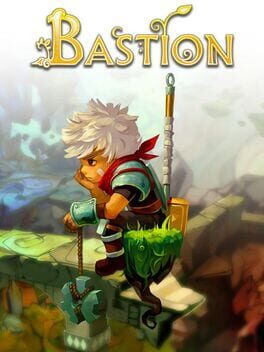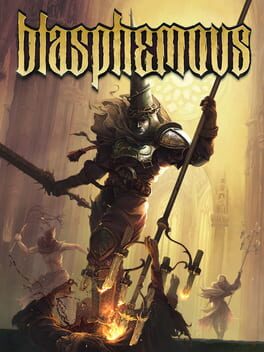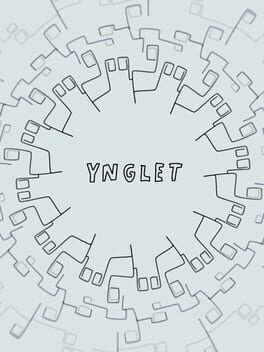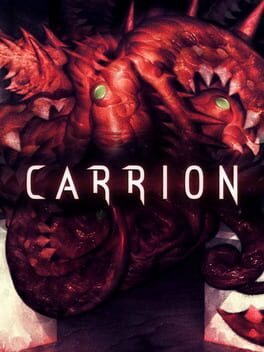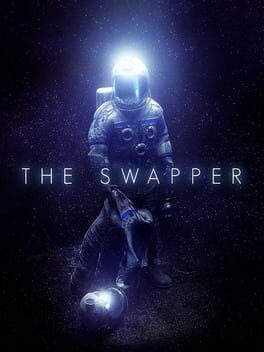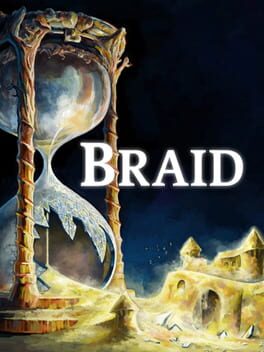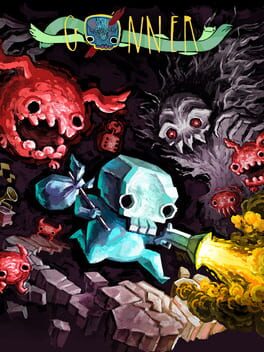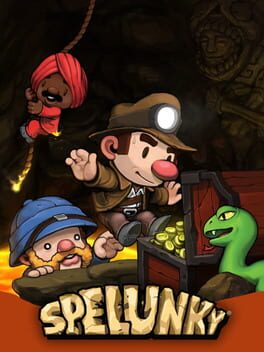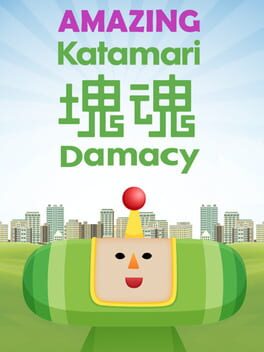2011
So I started to write up a whole long thing comparing the indie film movement of the mid-late 80s and early-mid 2000s to the indie game design movement of the mid 2000s-early 2010s, reflecting on how in these types of "industrial" art forms there are these brief windows where the tools of production and distribution are sufficiently accessible but also the competition is relatively sparse and it becomes uniquely possible for nascent creators to make a mark for themselves with their scrappy, clumsy, deeply flawed but often innovative first projects, but then how within a few years those windows of opportunity always slam shut again as things get rapidly more competitive and the technology gets better and even the "independent" end of things becomes highly professionalized and the expectations of minimum technical competence quickly become inflated to such a degree that were those early pioneer works to be made just 5 or 10 years later they'd be considered amateurish or straight up bad and go completely unnoticed... but then I got kind of lost in the weeds talking about Jim Jarmusch and Tom DiCillo and ended up deleting the whole thing.
Anyway, the point is that playing Bastion today, the thing that stands out the most is just how clunky and stiff it is in just about every way—from the controls, to the animation, to the implementation of the mechanics themselves, to the way the climactic final level awkwardly forces you to both swap out a key movement mechanic with an entirely new one, and swap out both of your weapons and your special attack with a cumbersome, kind of shitty new weapon that radically slows down the pace of the game and imposes a very specific play style. The thing that stands out the second most is how much this game serves as a trial run for a lot of the design innovations that would ultimately go into Hades.
I wouldn't really recommend this to anyone who's not a game historian.
Anyway, the point is that playing Bastion today, the thing that stands out the most is just how clunky and stiff it is in just about every way—from the controls, to the animation, to the implementation of the mechanics themselves, to the way the climactic final level awkwardly forces you to both swap out a key movement mechanic with an entirely new one, and swap out both of your weapons and your special attack with a cumbersome, kind of shitty new weapon that radically slows down the pace of the game and imposes a very specific play style. The thing that stands out the second most is how much this game serves as a trial run for a lot of the design innovations that would ultimately go into Hades.
I wouldn't really recommend this to anyone who's not a game historian.
2018
Feels a bit like the ultimate apotheosis of the modern roguelike: after over a decade of refinement within the genre, the balance between randomness & strategy, repetition & meta-progression, have finally been perfectly calibrated to their optimum state. This is the game's greatest strength. But it may also be its greatest weakness. Despite coming back to it day after day, I can't help but feel there's something... empty about Hades. Once you finally defeat your dad and breach the underworld for the first time, unlocking an array of self-imposed handicaps for ever-greater rewards, the Skinnerbox skeleton really begins to peek through more and more.
I'm still in the throws of my addiction to this game, so I imagine I'll be playing it a while longer. But the magic has already started to fade.
(Minus half a star for the insufferable Whedon-esque quips, and for paying homage to Morte of Planescape: Torment infamy, the bane of my existence.)
I'm still in the throws of my addiction to this game, so I imagine I'll be playing it a while longer. But the magic has already started to fade.
(Minus half a star for the insufferable Whedon-esque quips, and for paying homage to Morte of Planescape: Torment infamy, the bane of my existence.)
2019
I wanted this to be either more Catholic or less. It's like a weird edgelord Catholicism without Christ that cuts out anything about life or resurrection or forgiveness and just leaves all the gothic bits about sin and suffering. And so self-serious! Everything about this game owes more to Symphony of the Night than any other non-Igarashi Metroidvania I've played, and yet it neglects to borrow any of that game's campiness. It all gets a little tiresome?
That's just talking about aesthetic, worldbuilding, and vibes though. What about the gameplay? It's... fine. I had fun. And there's more than enough upgrades and easter eggs and assorted goodies to keep you busy. It doesn't really innovate too much on the classic "Igvania" template—more just gives it a Dark Souls coat of paint—but it also does a decent job living up to that standard, which is in-and-of-itself a pretty high bar. Having yet another Castlevania clone isn't necessarily a bad thing when it's done this well. Just don't go into it expecting much more than that.
That's just talking about aesthetic, worldbuilding, and vibes though. What about the gameplay? It's... fine. I had fun. And there's more than enough upgrades and easter eggs and assorted goodies to keep you busy. It doesn't really innovate too much on the classic "Igvania" template—more just gives it a Dark Souls coat of paint—but it also does a decent job living up to that standard, which is in-and-of-itself a pretty high bar. Having yet another Castlevania clone isn't necessarily a bad thing when it's done this well. Just don't go into it expecting much more than that.
2021
2020
I have my gripes. And yet... Carrion nails one of the trickiest but most important features of any great action game: simply moving through the world is SO. DAMN. SATISFYING.
(CODA: There is a small but dedicated modding community for this game, and they've made some damn good custom campaigns that rival the original — check out "The Hive," "Chaos Theory," and "Hideout" on the Steam Workshop)
(CODA: There is a small but dedicated modding community for this game, and they've made some damn good custom campaigns that rival the original — check out "The Hive," "Chaos Theory," and "Hideout" on the Steam Workshop)
The fact that this game recreates the Guantanamo Bay detention camp, but then makes it canonically run not by the US government, but by the paramilitary force of a shadowy Illuminati-esque global cabal headed by a supervillain with a literal skull for a face, which the US military then bombs because it would presumably be an international scandal if word of a black site being run on US-controlled soil ever got out, tells you kind of everything you need to know about Kojima's approach to politics.
2013
2008
2016
2018
Time to admit I'm probably never going to come back to this one. I absolutely love the way the game defamiliarizes or innovates on the standard Metroidvania powerups (ultimately emphasizing puzzle solving over action platforming). The aesthetic is also pretty neat. But the backtracking was just too tedious and the map too confusing for me to want to wander through the same areas over and over.
2016
Incredibly smooth gamefeel + colorful, charming, minimalist graphics + varied styles of play work to create a flow state (egged on by the combo mechanic), hitting that sweet spot between relaxing and challenging. I suspect I'll be playing this game fairly regularly for a while to come.
Still need to try the sequel.
Still need to try the sequel.
2012
Transcript of a text conversation with my gf...
April 4, 2019, 12:04 AM
>> Decided to try playing Katamari “against the grain” (as [Walter] Benjamin would say) and aim to get as many coins as possible while getting as few points as possible
>>Check out these C H O N K cousin balls...
https://imgur.com/a/jPXKrvM
>> Apparently the game isn’t as linear as I thought - if you don’t get big enough, each little area turns into a loop and it won’t let you leave until you get big enough to be able to pick up the smallest objects in the next area
>> But the “cousins” are way oversized visually compared to how much actual growth they give you in terms of game mechanics, so they just pile up until they fill the whole screen - hence the chonky boys above
>> It makes it harder to see what you’re doing, so it gets easier to “mess up” and pick up actual objects (giving you points) - but even though they take up graphical space, only the actual Katamari ball counts in terms of game mechanics - if the cousins stuck to your ball touch things, they just pass right through them - and eventually if you’re able to pick up enough cousins you’re able to advance to the next “scale” or whatever without picking up any actual points-granting objects
>> It would be really really hard and probably take hours, but theoretically at least I think it would be possible to reach the rainbow bridge stage while getting zero points
>>> Hahahaha holy shit
>>> You’ve ascended
>>> to True contrarian Gamer levels
>>> I support this
>> Anyway I’m thinking I should drop out of school, practice this all day until I’m skilled enough to achieve this, and then make a 10 hour long play through video and become YouTube famous
April 4, 2019, 12:04 AM
>> Decided to try playing Katamari “against the grain” (as [Walter] Benjamin would say) and aim to get as many coins as possible while getting as few points as possible
>>Check out these C H O N K cousin balls...
https://imgur.com/a/jPXKrvM
>> Apparently the game isn’t as linear as I thought - if you don’t get big enough, each little area turns into a loop and it won’t let you leave until you get big enough to be able to pick up the smallest objects in the next area
>> But the “cousins” are way oversized visually compared to how much actual growth they give you in terms of game mechanics, so they just pile up until they fill the whole screen - hence the chonky boys above
>> It makes it harder to see what you’re doing, so it gets easier to “mess up” and pick up actual objects (giving you points) - but even though they take up graphical space, only the actual Katamari ball counts in terms of game mechanics - if the cousins stuck to your ball touch things, they just pass right through them - and eventually if you’re able to pick up enough cousins you’re able to advance to the next “scale” or whatever without picking up any actual points-granting objects
>> It would be really really hard and probably take hours, but theoretically at least I think it would be possible to reach the rainbow bridge stage while getting zero points
>>> Hahahaha holy shit
>>> You’ve ascended
>>> to True contrarian Gamer levels
>>> I support this
>> Anyway I’m thinking I should drop out of school, practice this all day until I’m skilled enough to achieve this, and then make a 10 hour long play through video and become YouTube famous
2019
Charming. Short.
I guess I was expecting this to be more of a sandbox game and less of an explicit puzzler. There's benefits and drawbacks to both approaches. The sandbox approach would risk boredom, and without being given any direction I imagine it might become frustrating not knowing how many reactions or outcomes one is missing out on by not having discovered the proper triggers for them. Conversely, the puzzle solving approach encourages and allows for more complexity in setting up elaborate, multi-step pranks that an individual player would likely never stumble upon without at least some guidance; but it also imposes a certain amount of linearity, and dampens somewhat the joys of pure discovery and anarchic-ness.
I was immediately disappointed when the checklist first made it's appearance at the start. (A meddlesome goose with a to-do list?? The scourge of productivity strikes again!) Realistically there was probably no other way to make this work, and any alternative would have likely ended up less fun. To their credit, they also do a good job trying to encourage more aimless experimentation by way of the "To Do (As Well)" secret checklist, whose items are only revealed after they've already been accomplished (or once the main game is beaten).
I also try to remind myself of a phrase my old professor, the filmmaker Thom Andersen, liked to repeat: "suspense is an alienation effect." In other words: by prolonging narrative closure, raising a question and then leaving it unresolved for a certain period of time, you create a space of heightened attention for the viewer, and this attention can be re-directed however the director sees fit. (Andersen's favorite example of this was a scene in the 1973 political thriller The Day of the Jackal where otherwise mundane Parisian street scenes become strangely riveting by virtue of our knowledge that Charles de Gaulle's would-be assassin is hiding somewhere among them.)
There is a case to be made that an analogous principle exists in game design: goals are an alienation effect. The gap between assignment and execution opens up its own space of unresolved tension, heightening our perception, and—in a feature that distinguishes games from a medium like film—directing or guiding our behavior. The experience of the game, in other words, is what happens while we're busy trying to accomplish other plans.
Still, there's part of me that laments the narrow way that goal-oriented engagement hews and anchors our attention. How much of the game's world is blinkered out as I fixate on solving the problems it presents me with? How much is lost when I perceive that world as purely means to various ends? How does the pleasure of an action done for its own sake compare to the satisfaction of an action within a chain leading to an end result already known in advance? (Even the attempt to uncover a "hidden" objective creates a wholly different, and arguably impoverished, way of looking from that of open-ended playfulness.)
I'm reminded too that Thom Andersen, in addition to his love for classical narrative cinema, is one of the most notable critical champions of the filmic work of Andy Warhol. Perhaps that's what I wanted out of this. A more Warholian experience. Not the heightened mundanity transformed by the alienation effect of suspense/objectives, but mundanity itself, raw. A slab of time to live in. An array of objects and effects and patterns to fuck around with.
But I suppose at that point what I'm asking for isn't really a game at all. So I can't say I was misled. After all, it's right there in the title.
I guess I was expecting this to be more of a sandbox game and less of an explicit puzzler. There's benefits and drawbacks to both approaches. The sandbox approach would risk boredom, and without being given any direction I imagine it might become frustrating not knowing how many reactions or outcomes one is missing out on by not having discovered the proper triggers for them. Conversely, the puzzle solving approach encourages and allows for more complexity in setting up elaborate, multi-step pranks that an individual player would likely never stumble upon without at least some guidance; but it also imposes a certain amount of linearity, and dampens somewhat the joys of pure discovery and anarchic-ness.
I was immediately disappointed when the checklist first made it's appearance at the start. (A meddlesome goose with a to-do list?? The scourge of productivity strikes again!) Realistically there was probably no other way to make this work, and any alternative would have likely ended up less fun. To their credit, they also do a good job trying to encourage more aimless experimentation by way of the "To Do (As Well)" secret checklist, whose items are only revealed after they've already been accomplished (or once the main game is beaten).
I also try to remind myself of a phrase my old professor, the filmmaker Thom Andersen, liked to repeat: "suspense is an alienation effect." In other words: by prolonging narrative closure, raising a question and then leaving it unresolved for a certain period of time, you create a space of heightened attention for the viewer, and this attention can be re-directed however the director sees fit. (Andersen's favorite example of this was a scene in the 1973 political thriller The Day of the Jackal where otherwise mundane Parisian street scenes become strangely riveting by virtue of our knowledge that Charles de Gaulle's would-be assassin is hiding somewhere among them.)
There is a case to be made that an analogous principle exists in game design: goals are an alienation effect. The gap between assignment and execution opens up its own space of unresolved tension, heightening our perception, and—in a feature that distinguishes games from a medium like film—directing or guiding our behavior. The experience of the game, in other words, is what happens while we're busy trying to accomplish other plans.
Still, there's part of me that laments the narrow way that goal-oriented engagement hews and anchors our attention. How much of the game's world is blinkered out as I fixate on solving the problems it presents me with? How much is lost when I perceive that world as purely means to various ends? How does the pleasure of an action done for its own sake compare to the satisfaction of an action within a chain leading to an end result already known in advance? (Even the attempt to uncover a "hidden" objective creates a wholly different, and arguably impoverished, way of looking from that of open-ended playfulness.)
I'm reminded too that Thom Andersen, in addition to his love for classical narrative cinema, is one of the most notable critical champions of the filmic work of Andy Warhol. Perhaps that's what I wanted out of this. A more Warholian experience. Not the heightened mundanity transformed by the alienation effect of suspense/objectives, but mundanity itself, raw. A slab of time to live in. An array of objects and effects and patterns to fuck around with.
But I suppose at that point what I'm asking for isn't really a game at all. So I can't say I was misled. After all, it's right there in the title.
1992
I haven't even played this yet but I downloaded the fan translation ROM patch and this is in the ReadMe file:
"Noobow as it turns out is a Japanese mascot for chocolate if I'm remembering it correctly. As such it's entirely geared towards children and is perhaps only noteworthy for its cute graphic design. The game is an extremely simple platformer with the most basic of puzzles that aren't hard to figure out. There's really no reason an adult should be playing this game unless they have the mind of a child or are interested in the history of video games. I recommend that if anyone reading this has children, they should have their children play the game instead."
LMAO DRAG ME! 😭
"Noobow as it turns out is a Japanese mascot for chocolate if I'm remembering it correctly. As such it's entirely geared towards children and is perhaps only noteworthy for its cute graphic design. The game is an extremely simple platformer with the most basic of puzzles that aren't hard to figure out. There's really no reason an adult should be playing this game unless they have the mind of a child or are interested in the history of video games. I recommend that if anyone reading this has children, they should have their children play the game instead."
LMAO DRAG ME! 😭
